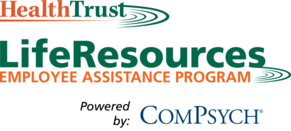The information contained in this article is not intended as legal advice and may no longer be accurate due to changes in the law. Consult NHMA's legal services or your municipal attorney.
Are your employees financially fit? If they are like many Americans, the answer is no. Recent statistics paint a troubling picture:
- About two-thirds of Americans live paycheck-to-paycheck. (SHRM)
- In 2022, 35 percent of households were worse off financially than in the previous year (up from 20 percent in 2021). (Federal Reserve)
- Only 54 percent of Americans have a three-month emergency fund and one-third could not cover a $500 emergency (18 percent could not cover a $100 emergency). (Federal Reserve)
- 83 percent of U.S. adults say that inflation is a source of stress for them, with 57 percent reporting that having enough money to pay for things in the present (like rent/mortgage) is their main source of financial stress and 43 percent reporting that saving enough money for the future is their main source of stress. (American Psychological Association).
Mental and Physical Health: The Money Factor
Struggling to make ends meet day to day and worrying about not being able to manage emergencies should they arise can lead to anxiety and stress that can affect an individual’s health, as well as impact their work quality and productivity. A Pew Research Center report found that worries about personal health and financial security are related to higher levels of psychological distress – an alarming connection, given that psychological distress is associated with health problems including emotional exhaustion, reduced immune response, heart disease, and increased mortality. More and more, health experts are realizing that financial fitness is an important part of overall wellness.
How Can You Help Your Employees Become Financially Fit?
As municipal employers, you know that having healthy employees who aren’t burned out on the job contributes not only to better productivity at your workplace, it can also impact the community your employees serve. Given the limited budgets of most New Hampshire municipalities, providing generous raises to your staff may not be an option or even a solution; but there are steps you can take to help your employees get their finances in shape and create a happier, healthier workplace.
o Stay attuned to signs of increased stress in your employees, such as excessive tiredness, lack of enthusiasm, negativity, reduced quality of work, frustration, calling in sick more often. Have an honest conversation about what is causing their stress and ask how you can help.
o Provide the benefits they need: In addition to offering medical, prescription drug and dental coverage, consider adding the following coverage lines to your benefits package:
o Life and disability coverage can help prevent the death or disability of an employee from turning into a lifelong financial crisis for the family.
o Flexible spending accounts and/or health reimbursement arrangements can help covered individuals manage their medical costs.
o Encourage them to use EAP services. If you offer your employees an Employee Assistance Program, make sure they are aware of the services available. Some EAPs offer counseling services as well as consultations with financial experts, or online resources and tools at no cost to your employees.
o Share local and national resources. The New Hampshire Banking Department has links to multiple financial literacy resources for helping individuals avoid money scams, access free credit reports, and use interactive online tools to learn money management skills, and more: https://www.banking.nh.gov/consumer-assistance/financial-literacy-resourcesConnect with your credit union and local banks. Some offer free seminars and presentations on money management and other financial topics and may be able to come to your workplace to present to your staff or participate in a wellness fair.
Happy Holidays on a Budget: 7 Money-Saving Tips for You and Your Employees
Holiday spending can easily leave people in debt, contributing to stress that may last well into the next year. Here are some tips and resources to share with your employees to help them – and you -- sail through the holiday season happy, healthy and financially fit!
- Make a list and check it twice (or more). Write down the names of all the people to whom you will be giving a gift and how much you want to spend and stick to the list as closely as possible to curb impulse buying. Save your receipts and review them next year to get a realistic look at how much you typically spend and where you could cut back.
- Minimize shipping costs. If you will be ordering several gifts from one retailer, order them all at once to arrive in one package.
- Save on groceries. In the weeks leading up to the holidays, read store flyers and shop store sales for non-perishables and foods with a long shelf life. Join your grocery store’s loyalty program for additional discounts.
- Make it pot luck. Hosting a holiday meal or party? Ask each guest to bring their own favorite holiday dish. It will mean lower costs and less work for you, and will guarantee that everyone has new foods to try as well as their holiday favorites at your table.
- Make it, bake it, give it: Whether you make holiday cookies, homemade jam, mittens, jewelry, ornaments, a framed photo, or other creations, gifts you make yourself show how much you care, typically cost less, and can be one-of-a-kind presents recipients will treasure.
- Share your time and expertise: Instead of purchasing gifts, create homemade gift certificates for services such as free babysitting or pet sitting, help organizing a room or closet, free rides to the airport, knitting, cooking or baking lessons – whatever skills you have and want to share.
- Indulge in some free (or almost free) fun. Start a tradition of taking a post-Thanksgiving meal family walk, play a touch football game or a favorite family board game, decorate gingerbread houses, or do another fun activity. Set aside an afternoon during the season for sledding, ice skating or a hike on a cleared, wooded trail followed by hot chocolate and cookies. Attend a service at a place of worship other than your own. Go caroling. Host a cookie swap party so everyone leaves with a variety of holiday cookies. Take a family drive around your town to admire all the holiday decorations and vote for your favorites.
Take time to have fun with people you love this holiday season and you may not only spend less money, you will share the best gift of all – happy memories.
Good News for HealthTrust Members!
If your Group offers HealthTrust medical coverage, your employees, retirees, their dependents and household members have access to valuable tools and resources for getting their finances in order through the LifeResources Employee Assistance Program (EAP) offered by HealthTrust in collaboration with ComPsych. Through the EAP they can consult a certified public accountant or other financial expert at no cost to them. They can also use the valuable online tools offered through WellthSourceSM, a digital financial wellness platform that helps users create a well-planned, flexible and sustainable lifestyle of healthy financial choices and habits.
Key WellthSource Features:
- An interactive digital platform that creates a personalized financial wellness curriculum for each user.
- Easy-to-follow digital modules to create a legally binding will and personalized financial plan.
- Needs-based, guided programs on key areas of financial well-being.
- Convenient online and mobile access to thousands of cutting-edge financial tools and services.
- Access to ComPsych’s dedicated staff of impartial, in-house CPAs, CFPs and other financial experts.
For more information about WellthSource and all resources and services available through the EAP, contact the LifeResources Employee Assistance Program at 800.759.8122.
Laura McCarthy is the Communications Specialist at HealthTrust.
SOURCES
Society for Human Resource Management: https://www.shrm.org/resourcesandtools/hr-topics/compensation/pages/high-inflation-drives-more-employees-to-live-paycheck-to-paycheck.aspx
Federal Reserve: https://www.federalreserve.gov/newsevents/pressreleases/files/other20230522a1.pdf
https://www.federalreserve.gov/consumerscommunities/sheddataviz/worseoff.html
American Psychological Association: https://www.apa.org/news/press/releases/stress/2022/concerned-future-inflation and https://www.apa.org/news/press/releases/stress/2022/infographics/infographic-money-inflation
Pew Research Center:https://www.pewresearch.org/short-reads/2021/03/16/many-americans-continue-to-experience-mental-health-difficulties-as-pandemic-enters-second-year/
National Center for Biotechnology Information: https://www.ncbi.nlm.nih.gov/pmc/articles/PMC8806009/
American Bankers Association: https://www.aba.com/advocacy/community-programs/consumer-resources/manage-your-money/holiday-budget-tips
USDA: https://www.usda.gov/media/blog/2013/03/28/healthy-eating-budget


